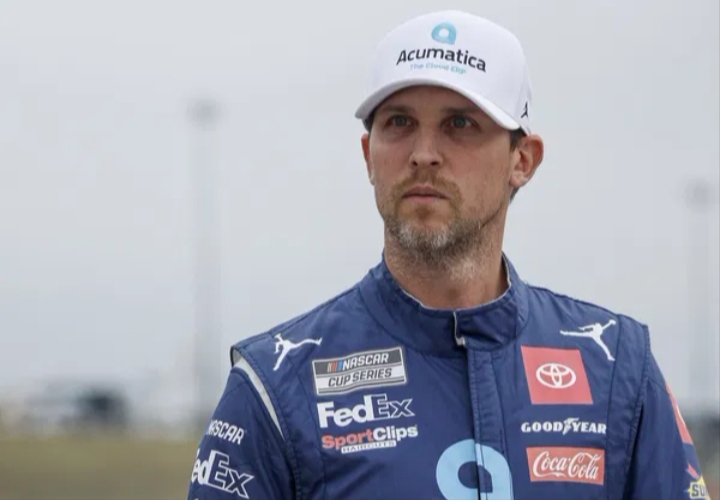
The 2004 NASCAR Cup Series season marked the debut of “The Chase,” a precursor to today’s playoff format. The inaugural 10-race showdown featured a fierce battle among Jimmie Johnson, Jeff Gordon, Dale Earnhardt Jr., Mark Martin, and 26-year-old Kurt Busch, who was in his fourth year of Cup competition. With a fifth-place finish in the final race at Homestead-Miami Speedway, Busch secured his first Cup championship—an achievement he still cherishes two decades later.
“Looking back 20 years, it’s amazing to reflect on that championship season,” Busch recalls. “2004 was a revolutionary year for NASCAR, with Nextel becoming the title sponsor and the introduction of a new points system. It was an incredible time to be involved in the sport.”
Busch’s path to that championship began in 1999 when he earned a spot in the Roush Racing “Gong Show,” a talent evaluation program. After being named Rookie of the Year in the 1998 NASCAR AutoZone Southwest Series, Busch’s standout performance in the Gong Show led to a ride in the Craftsman Truck Series. Driving the No. 99 Roush Racing Ford F-150, he finished as the championship runner-up in the 2000 Truck Series.
Winning the Gong Show opened the door for Busch to start his NASCAR journey. “1999 was pivotal for me,” he says. “Winning the Southwest Tour Championship caught people’s attention and got me into the Gong Show, which was modeled after the 1970s TV show. There were five of us—champions from various regional series—and we had tryouts in Toledo and Phoenix. I was nervous at first, but by the second tryout, I felt more confident and delivered a standout performance. That secured my spot.”
Busch’s debut Truck race at Daytona was a whirlwind. “I wrecked multiple times but still somehow finished second,” he recalls. He quickly found his footing, winning his first Truck race at Milwaukee in July and finishing the season with four wins, four poles, and second in the standings behind teammate Greg Biffle. “It felt like Greg and I dominated that season, often finishing one-two. It was an incredible learning experience.”
In August of 2000, Jack Roush made Busch an offer that changed his life: a move to the Cup Series. “I was floored,” Busch says. “I’d barely transitioned out of a Legends car, and now I was being asked to race in Cup. Jack told me he’d rather I make mistakes at the top level than spend another year in Trucks or the Busch [now Xfinity] Series. It was a fast transition, but I couldn’t say no to such an opportunity.”
By 2002, Busch had established himself in the Cup Series, winning his first race at Bristol in March alongside crew chief Jimmy Fennig. The following year, 2003, saw Busch and his team excel on larger tracks during NASCAR’s coil binding era, laying the groundwork for his championship-winning 2004 season.
In 2003, the sport began to slow down for me mentally. I could really feel the car and approach situations without being overly anxious or nervous. This allowed me to make clean, precise passes, which boosted my confidence. However, that newfound confidence also had its downsides, particularly with the media. It turned out to be one of my toughest years, dealing with rival drivers, media challenges, and various controversies. I realized I needed to block out the distractions from the media, become more professional, and focus on maintaining the consistency that had us finishing in the top five nearly every week.
That mindset paved the way for 2004. It was a mental reset, and I felt like I was mastering the cars and setups. My crew chief, Jimmy Fennig, and I sat down on January 1, shortly after NASCAR announced the new point system, and developed a game plan for the season leading up to Homestead.
The 2004 season felt magical. From the beginning, our strategy was to fly under the radar as an underdog team. We decided to conserve our test sessions, which were limited back then, to use them strategically later in the season. Early on, we relied on setups from 2003, but as the season progressed, we continued to advance and consistently finished in the top 10.
The September race at New Hampshire International Speedway marked the start of our championship push. Before the playoffs began, we focused heavily on testing at key tracks like New Hampshire, Dover, Kansas, Charlotte, Homestead, and Martinsville. It was an intense schedule, and the added stress was something we didn’t anticipate. Despite that, we managed to maintain our strong playoff performance.
Winning the first-ever NASCAR playoff race at Loudon set the tone for the rest of the championship run. At that moment, we dropped the underdog label and made it clear we were serious contenders for the title.




